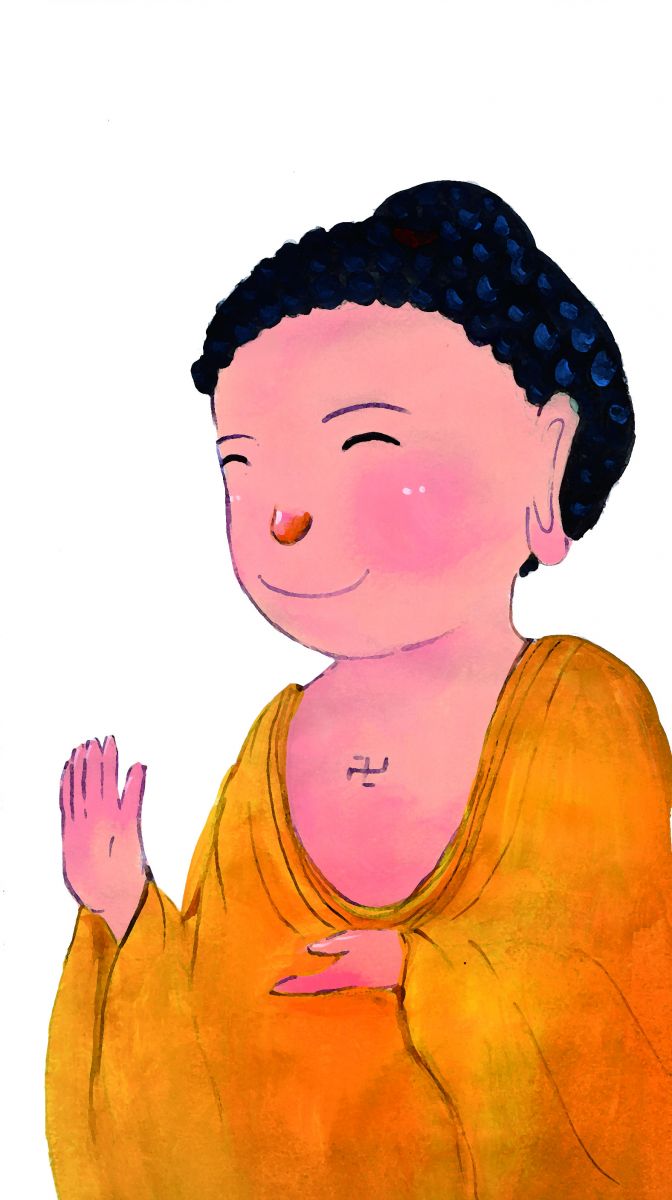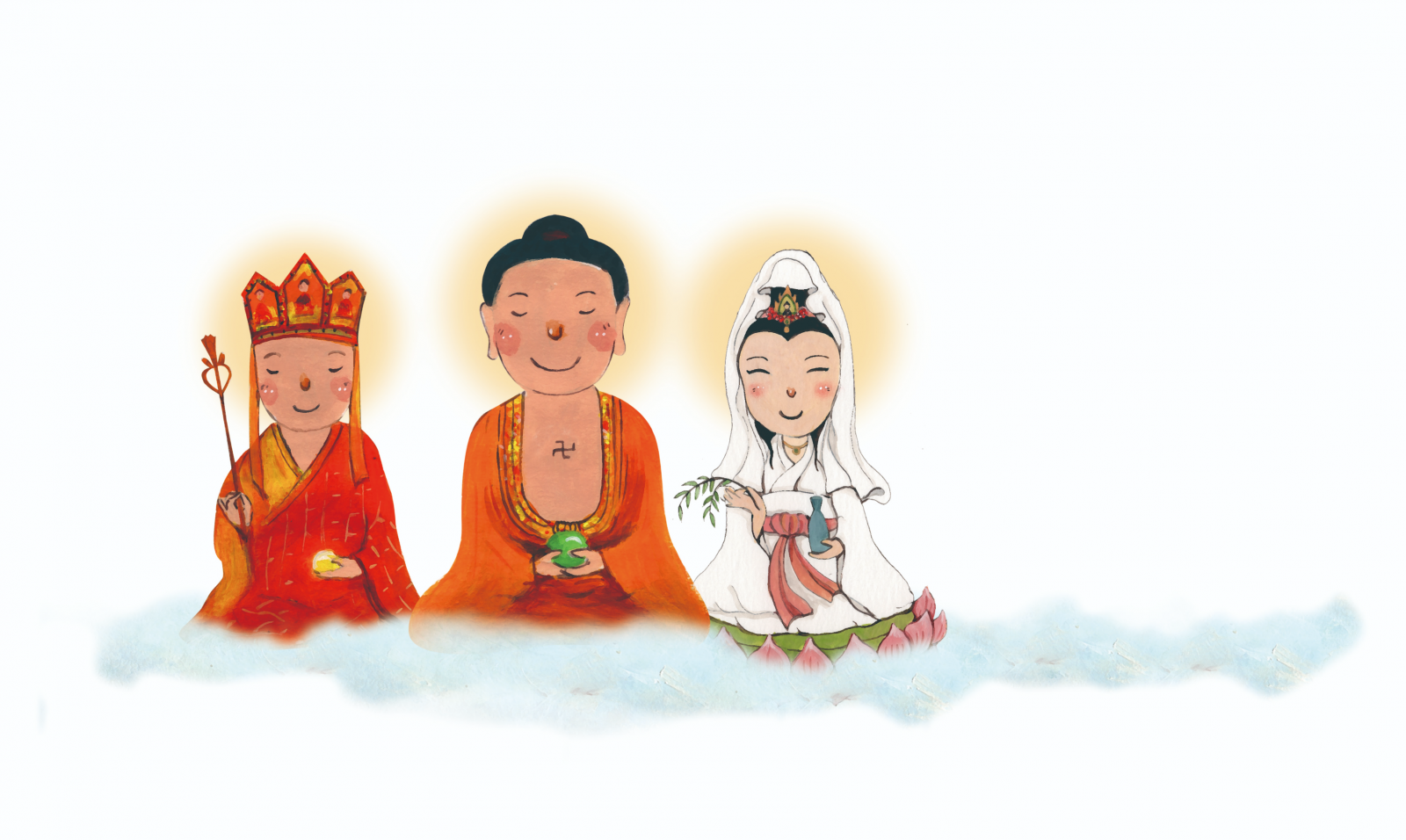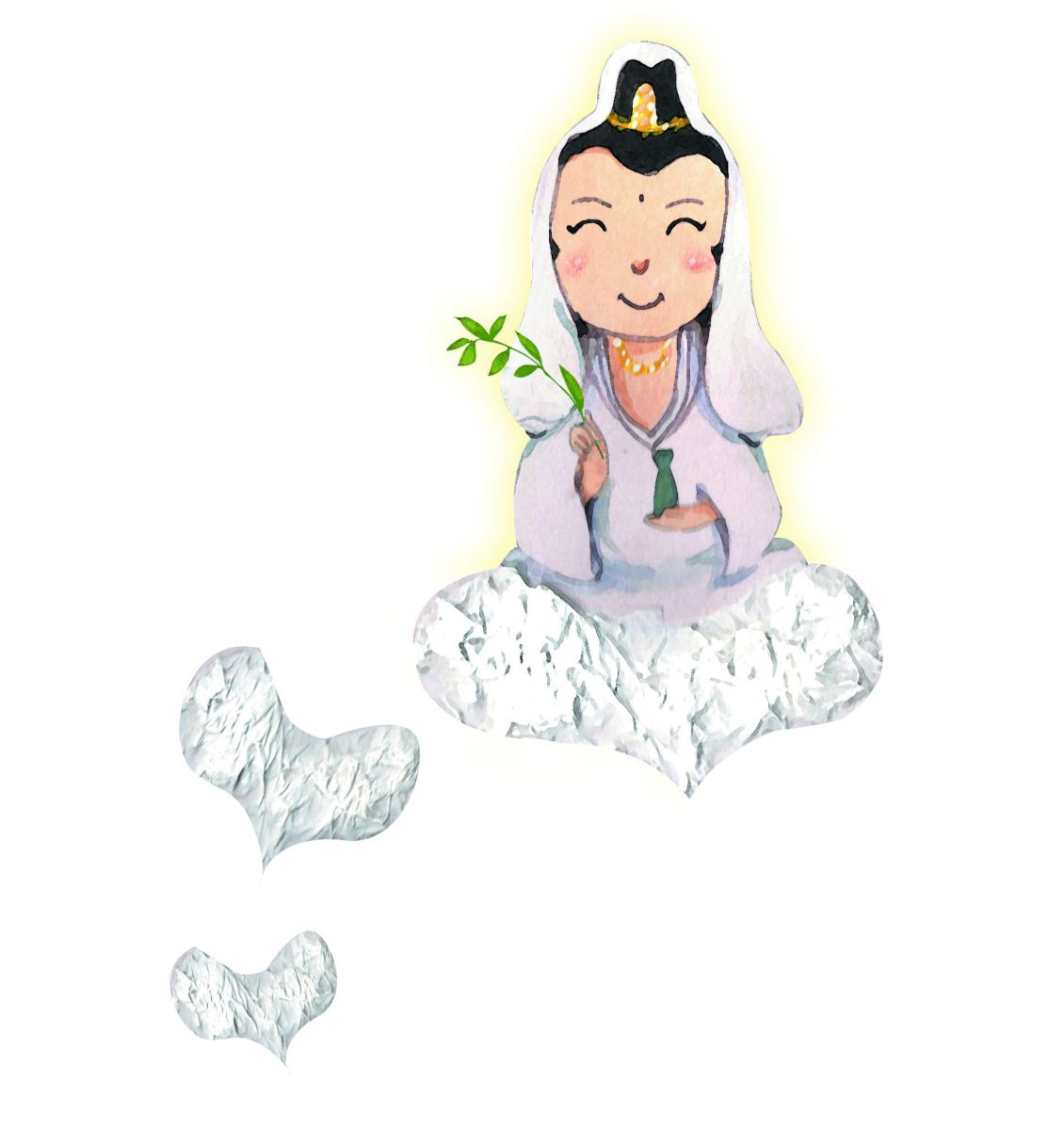Special Topics
Buddhas and Bodhisattvas in the Pure Lands

More than 2,600 years after his parinirvana, the Buddha's compassion and wisdom, asembodied in concrete figures of the Buddha (Skt. buddharūpa), still transcends the barrier of time, space, and language, guiding and leading sentient beings to the path to the truth.
Statues of the Buddha have long been used by Buddhist disciples as an object of focus (ālambana) for their spiritual practice. These statues help Buddhists recall and visualize the Buddha's image, epithets, and merits, thereby gaining the power to settle their mind and find the goal in search of the meaning of life. According to the Ekottara Agama, after attaining Buddhahood, the Buddha ascended to the Trayastriṃsa Heaven during a Vassa and stayed there for three months in order to give a Dharma talk to his mother, Maya. During that time, King Udayana in Kosambi fell ill from missing the Buddha. His officials proposed to sculpt a statue of the Buddha to relieve the king's sorrow. Therefore, the king summoned craftsmen to build a Buddha statue about 5.5-foot-tall out of sandalwood. Later on, King Pasenadi of the Kosala Kingdom also called for artisans to cast a golden Buddha statue about 5.5-foot-tall. This is the earliest record of Buddha statues appearing in the world, though archaeological evidence of these two statues has not been found yet.
As for archaeological discoveries, the earliest Buddha statues date back to the first century CE. Before that, there was no statue of the Buddha in the carvings of stupas, and Buddhists used images such as bodhi tree, seat of enlightenment (vajrāsana), and the wheel of Dharma to symbolize the Buddha. With the introduction of Greek mythology and the art of statuary into India, coupled with strong support of the ruling class at that time, statues of buddhas and bodhisattvas have been created in everlasting commemoration of the Buddha's perfection. That was also the period when Mahayana Buddhism started to blossom.
Witnessing the spread and development of Buddhism
Over time, Buddhism has spread from India to all over the world. Along the path of its propagation, statues of buddhas and bodhisattvas are often found in grottoes and caves built in Central Asia or along the Silk Road, in pagodas and temples in Southeast Asia, and in monasteries and temples in China, Japan, Korea, and Vietnam. Common materials for Buddhist statues include stone, wood, metal or clay. There is also no shortage of murals and paintings depicting narratives from Buddhist scriptures.
For group statues of buddhas and bodhisattvas, the number of figures ranges from one, two, three, five, seven, and even to eleven, or thirteen. The ways to arrange the statues include one buddha accompanied by two bodhisattvas, one buddha flanked by two disciples, two buddhas seated side by side, three buddhas, five buddhas, and seven buddhas. Within the arrangement of one buddha with two bodhisattvas, there are various combinations such as the Three Saints of the Western Pure Land, the Three Saints of the Ghanavyūha, the Three Saints of the Sahā World, Triad of Maitreya, etc. Through the various arrangements of Buddhist figures, we can get a glimpse into how Buddhism developed across different times and its influence in various places as it spread.
As Elderly Ven. Yin Shun (印順長老) explained in The Origin and Development of Mahayana Buddhism (《初期大乘佛教之起源與開展》), the rise of Mahayana Buddhism is inseparable from the concept that all the Buddhas and Bodhisattvas of the ten directions exist in the present time." When Buddhism became prevalent in the northwest of India, the Mahayana Buddhist belief of "all the Buddhas and Bodhisattvas of the ten directions" emerged to accommodate different karmic capacities of sentient beings. According to Mahayana Buddhist texts, each Buddha and Bodhisattva has their own story of birth (jātaka), virtuous deeds (avadāna) and causes (nidāna), as well as their own unique practices as expedient means to guide and benefit all sentient beings.
Building statues to inspire faith and guide sentient beings
The prevalence of Mahayana sutras influenced the subject matter of Buddhist statues. As Professor Chen Ching-hsiang (陳清香), an expert in Buddhist statuary art, explained, the popular style of arranging the statues in the early days featured one buddha accompanied by two heavenly deities or two guardian deities (dharmapalas). Over time, the two deities of the Three-Saint style were replaced by two flanking bodhisattvas. For instance, in the carving of Vision of a Buddha's Paradise at the Lahore Museum, the principal figure is Amitābha, with two bodhisattvas, most likely Avalokiteśvara (Guanyin Bodhisattva) and Mahāsthāmaprāpta, on each side. This carving is considered to be the earliest depiction of the Western World of Ultimate Bliss.

Based on different Buddhist scriptures, later Buddhists created diverse combinations for the "Three-Saint" arrangement. For example, the two flanking bodhisattvas of Sakyamuni Buddha are sometimes Mañjuśrī and Samantabhadra, who assisted the Buddha in propagating Buddhist sutras as depicted in the Lotus Sutra. An additional example is the "Three Saints of the Sahā World," composed of Avalokiteśvara, Ksitigarbha, and Sakyamuni Buddha. According to the Ksitigarbha Sutra, they have the deepest karmic affinities with sentient beings in the Sahā World. The figure's growing popularity also facilitates the spread of the belief in Ksitigarbha and Guanyin Bodhisattva.
Emulating buddhas and bodhisattvas diligently without regressing
All buddhas and bodhisattvas commenced on their path of practice with a straightforward mind and pure aspiration. When we reverently admire and prostrate to the images or statues of buddhas and bodhisattvas, we will not only gain tranquility from gazing at their majestic appearances, but also find role models for our own practice from their compassionate vows and virtues. As we develop the aspiration to diligently follow their examples, we are already on the path towards liberation from affliction.

Let's emulate bodhisattvas
There are innumerable buddhas of the ten directions in the three periods. Each Buddha-land has a Buddha teaching and guiding sentient beings, while each Buddha has two bodhisattvas with virtually perfect and equal enlightenment as the flanking attendants. The triad is respectfully referred to as "Three Saints," representing the general and the specific, as well as compassion and wisdom as approaches to the Dharma. The central figure represents the "general whole" that incorporates the distinct virtues of the flanking bodhisattvas, who signify the "specific virtues" within the whole. For instance, Avalokiteśvara symbolizes compassion, while Mahāsthāmaprāpta manifests wisdom; Mañjuśrī represents "understanding", while Samantabhadra embodies "practice."
Flanking bodhisattvas have reached the highest level of bodhisattva practice. According to Mahayana Buddhist texts such as the Avataṃsaka Sūtra, the conditions for becoming a bodhisattva primarily require the practice of the Six Perfections (pāramitās). There are 52 stages on the bodhisattva path, from initial aspiration to attainment of Buddhahood. Before attaining Buddhahood, flanking bodhisattvas assist a buddha in propagating the Dharma and teaching sentient beings.
Bodhisattvas consider it their responsibility to save all sentient beings, neither regarding the seeking of personal liberation from suffering as the goal, nor taking nirvana as the end of their endeavors. They are willing to be companions of sentient beings in the Dharma life after life, helping them to ultimately attain Buddhahood. Therefore, sentient beings in the Sahā World regard bodhisattva-mahasattvas about to attain Buddhahood–such as Avalokiteśvara, Ksitigarbha, Mañjuśrī, and Maitreya–as role models to be admired and emulated.
As Buddhist practitioners, we can also become the Buddha's aides by learning to practice the bodhisattva path.
Related articles:
Buddhas and Bodhisattvas in the Pure Lands
The Triad of Sakyamuni Buddha
Three Saints of the Ghanavyūha
Three Saints of the Western Pure Land
Three Saints of the Eastern Pure Land
Buddhas of the Three Times
One Buddha Flanked by Two Disciples
Resource: Issue 402 of Humanity Magazine, Dharma Drum Publishing Corporation
Translation: Sinag-ling Li (李祥苓)
Editing: Keith Brown, Chia-Cheng Chang (張家誠)
